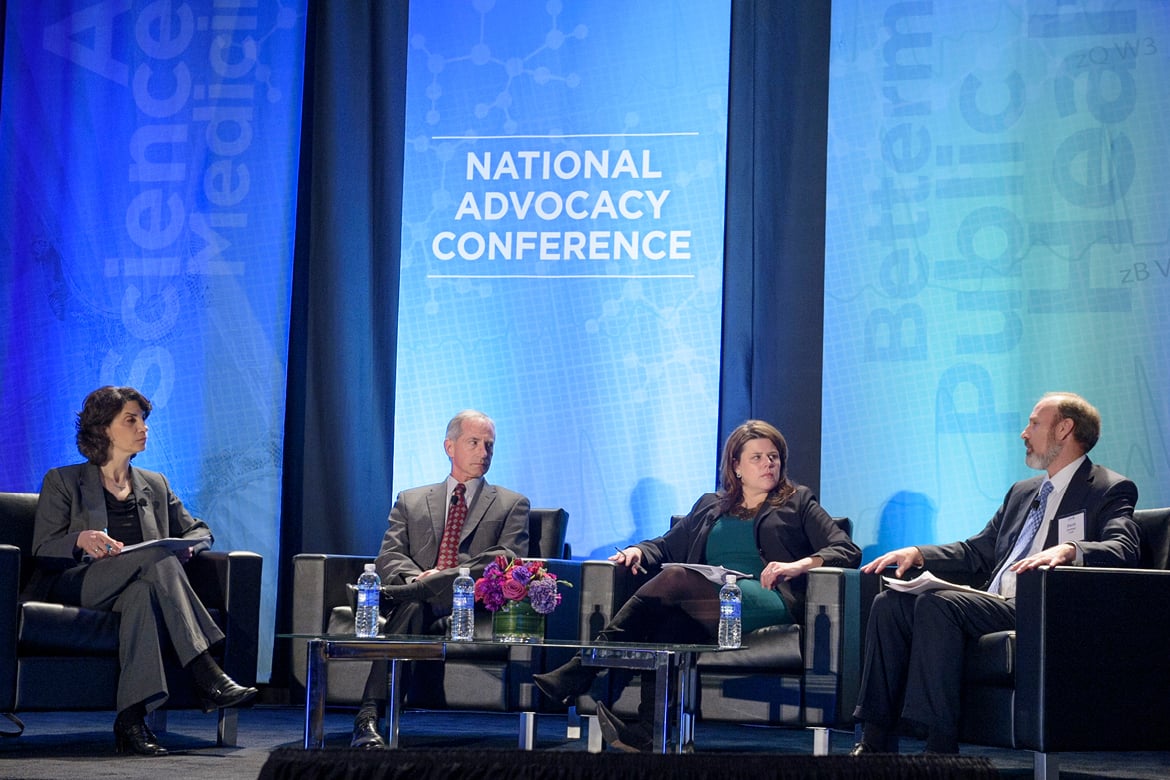Prescription spending is on the rise, according to a recent analysis, but what can be done to address patient and physician concerns about rising drug costs and change the course for the future? Find out what three experts had to say about the problem and what solutions they offered.
Three specialists in the field of pharmaceuticals last month came together at the 2016 National Advocacy Conference to discuss current drug spending and pricing, trends in the marketplace and how those trends are affecting patient access and adherence.
Why drug spending and prices are up
“There are four real reasons why [we] see drug prices going up,” said Steve Miller, MD, senior vice president and chief medical officer of Express Scripts. Here are the four reasons Dr. Miller gave:
- “The introductory price of new drugs is higher than it has ever been,” he said.
- “The inflationary increase of prices of existing branded products is the biggest factor driving the new trend,” Dr. Miller said.
- “For the first time,” Dr. Miller said, “generic prices aren’t going down like they used to, and in some cases generic prices are going up.”
- “[What] is really important is the end of the generic wave,” he said. “In the past, for every patient that you put on a new expensive drug, you had 10 patients that you could move to a generic. And so total drug spending was able to be held in check because generics created the head room that we needed to keep drug spend relatively flat.” “We’re coming to the end of that phenomenon,” he added. “So for all those reasons, you see drug prices going up.”
The Centers for Medicare & Medicaid Services (CMS) recently reported that U.S. prescription drug spending rose about 12 percent in 2014—up from a 2.4 percent growth in 2013—but what does this drastic change in spending mean?
“I think clearly in 2014 it was an unusual year,” said Lori Reilly, executive vice president of policy and research at PhRMA. “It was the first year where we actually had the Affordable Care Act implementation and Medicaid expansion.”
2014 was a high-water mark in terms of new drug approvals, she said. “We also had a new medicine hit the market that cures a disease that kills five times as many people as HIV/AIDS does in this country—Hepatitis C.”
“We saw large numbers of people enter Medicaid [who] had coverage for the very first time,” Reilly said.
“For the first time, we have about 50 percent of Americans that have a deductible for prescription medicine. Just three years ago, only 20 percent of patients actually had a deductible for prescription medicine.”
“A typical Medicare beneficiary has an income of about $23,500 a year,” said David Certner, legislative counsel and director of legislative policy at AARP. “Well, if you take the average price for some of the new specialty drugs, it’s about $53,000. That’s two times the income of a Medicare beneficiary.”
How we can move forward
In addition to citing the problems in the current system, all three panelists offered their solutions to these issues.
Change regulations, and create policy that makes sense
Regulatory delays and the cost and time it takes to get a product to the marketplace are standing in the way, Reilly said. “[Regulations] are certainly not helpful to the broader pharmaceutical industry and they’re not helpful to the patients who rely on those medicines.” Market-based incentives to bring more manufacturers into the mix could be one solution, she said.
“50 months is the average time it takes to get a generic through the FDA today,” she said. When there are smaller market-share products holding up the line, manufacturers that want to enter the market with larger market-share products could receive a voucher to jump to the front of that line, Reilly said. More manufacturers in the market means more of the right kind of competition and lower drug prices.
“[W]e need policies to help keep the generic market competitive,” Dr. Miller said. “Historically, the generic market was self-correcting. When the generic prices went up, many generic companies would reactivate their license, they’d get them to the marketplace, and they would start producing again.”
“Now, because of the ways of the FDA,” he said, “it’s hard to reactivate your license—it could take three to four years. And so the market is no longer self-correcting. We need policies that make sense.”
All three panelists agreed that the regulations around biosimilars are going to be important for the marketplace of the future to prevent skyrocketing drug prices.
Transparency
“There [are] more and more transparency tools,” Certner said. “I will be the first to admit that drug pricing is a very complicated thing, which is not good for patients.”
“We want and should demand transparency for our patients … for those people who pay for health care, that is the employers and the insurance companies,” he said. “You want your patients to be able to go on [a] website … and see exactly what it’s going to cost them out of their pocket.”
What [we] don’t want,” he said, “is transparency amongst competitors,” he said. “Transparency for competitors actually doesn’t lower the price.”
“You as physicians have a really big role to play in this,” Dr. Miller added, encouraging physicians to take action on behalf of their patients.
At the end of last year, physicians called for fairness in drug prices and availability and offered solutions at the 2015 AMA Interim Meeting. Prescription drug costs also made it on the list of the top 9 issues that will affect physicians in 2016.




